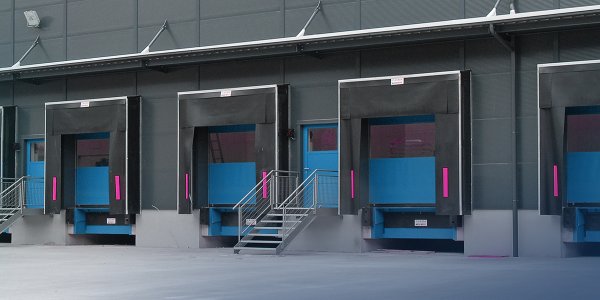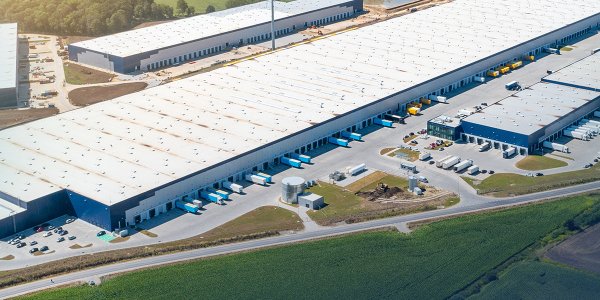In the dynamic world of temperature-controlled logistics, companies are facing ever-increasing challenges. Seamless monitoring of the cold chain is not only a question of compliance, but also a decisive factor for product quality, customer satisfaction and economic success.
What are the challenges in temperature-controlled logistics?
Manual temperature checks are prone to errors, documentation gaps jeopardize compliance, and delayed reactions to temperature deviations lead to avoidable loss of goods. Particularly critical: the costs for refrigerated transportation are on average 30-40% higher than for conventional transportation.
Energy costs for refrigeration units, special vehicles, trained personnel and complex quality assurance drive up costs. However, the biggest hidden cost factors are loss of goods due to temperature deviations and inefficient route planning - this is precisely where modern IT solutions come in.
What core features should modern cold chain software offer?
Effective logistics software for cold chain logistics must seamlessly integrate the following functions:
- Real-time temperature monitoring: continuous recording and visualization of all relevant temperature values along the entire supply chain cold chain.
- Seamless documentation: automated, watertight recording of all temperature-related data for compliance purposes and audits
- Intelligent alerting: immediate notification when limits are exceeded with escalating alerting mechanisms for time-critical interventions
- IoT integration: Seamless integration of temperature sensors, RFID tags and other smart devices into the cold chain monitoring system.
- Predictive analytics: prediction of potential temperature deviations based on historical data and current parameters
- Route optimization: intelligent planning of refrigerated transports taking into account temperature conditions, traffic situation and energy efficiency.
- Mobile access options: Applications for drivers, dispatchers and quality managers enable location-independent control and intervention.
How do modern IT solutions reduce costs in cold chain logistics?
The integration of modern technologies in perishables logistics offers considerable savings potential:
Reduced product losses: Thanks to precise real-time monitoring and fast response mechanisms, temperature deviations can be detected and rectified at an early stage before costly product damage occurs. Studies show that the use of IoT in cold chain logistics can reduce product losses by up to 25%.
Optimized energy consumption: Smart cooling technologies dynamically adapt the cooling capacity to the actual requirements and thus significantly reduce energy consumption. This leads to savings of 15-20% in energy costs in temperature-controlled logistics.
More efficient route planning: AI-supported logistics systems calculate the optimum routes, taking into account cooling requirements, delivery times and the traffic situation. The resulting reduction in driving times and downtimes can cut transport costs by 10-15%.
Improved compliance: Automated documentation and reporting minimize administrative effort and reduce the risk of costly compliance violations, which can quickly reach five-figure sums in regulated industries.

What role does IoT play in modern cold chain logistics?
The Internet of Things is fundamentally revolutionizing cold chain monitoring. Connected sensors continuously record temperature data, humidity and other critical parameters - not just during transportation, but across the entire cold chain supply chain.
The integration of IoT devices enables:
- Seamless data continuity: wireless sensors transmit temperature values in real time, even during transportation.
- Precise localization: GPS integration enables the exact allocation of temperature deviations to specific events and locations.
- Predictive maintenance: Early detection of problems with refrigeration units prevents costly breakdowns.
- Digital Twin: Virtual images of the cold chain enable simulations and optimizations without operational risk.
How can it be integrated into existing systems?
The implementation of specialized software for temperature-controlled logistics does not have to be disruptive. Modern solutions offer:
- API-based integration: open interfaces enable seamless connection to existing ERP, WMS and TMS systems.
- Cloud solutions: SaaS models reduce the initial investment and enable flexible scaling.
- Vendor-independent sensor technology: Compatibility with different hardware providers prevents vendor lock-in.
Which future trends will continue to transform cold chain logistics?
Developments in the field of refrigerated transportation are progressing rapidly. Pioneering trends include:
- AI-powered forecasting: machine learning algorithms anticipate potential temperature problems before they occur and recommend preventative measures.
- Autonomous cooling solutions: Self-regulating cooling systems respond to environmental changes without human intervention and continuously optimize their energy consumption.
- Sustainable cooling concepts: Integration of renewable energies and environmentally friendly refrigerants reduces the ecological footprint of cooling logistics.
Conclusion: The business-critical added value of modern cold chain logistics
Investing in advanced IT solutions for cold chain logistics is not a cost driver, but a tool for sustainable cost optimization. The combination of seamless temperature monitoring, intelligent route planning and IoT integration can reduce the overall costs of temperature-controlled logistics by 20-30%.
At the same time, the increased transparency and reliability boosts customer confidence. In an increasingly competitive market, excellence in cold chain logistics is becoming a key differentiator and growth driver.

